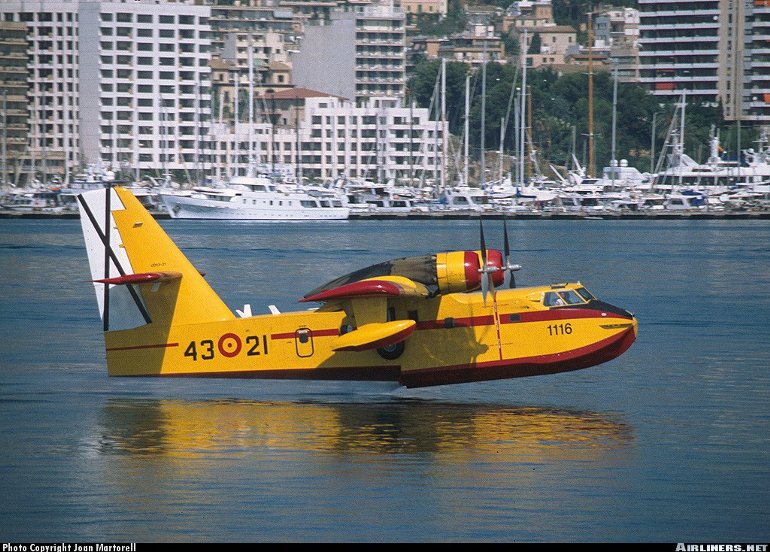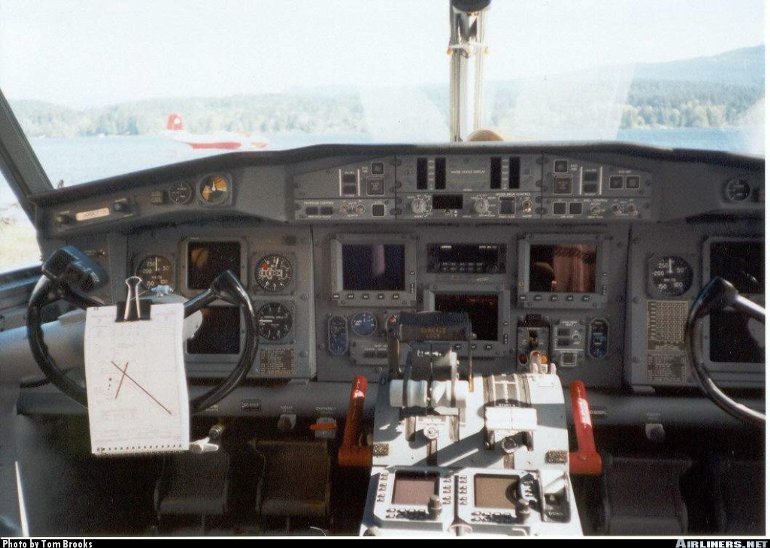Aircraft Technical Data
Canadair CL-215 & 415


| Details | |
| Country of Origin | Canada |
| Type | Firebomber and utility amphibian |
| History | The CL-215 was designed as a specialist firebomber, particularly suited to Canada and other heavily forested regions. The resulting amphibious aircraft is powered by two Pratt & Whitney R-2800 radials, and is capable of scooping up 5455 litres (1200Imp gal/1440US gal) of water in 12 seconds from a water source. The CL-215 first flew on October 23 1967, and first delivery was to the French civil protection agency in June 1969. Production of batches of CL-215s continued through to 1990. Originally the subsequent CL-215T was to be a simple turboprop powered development of the CL-215, and Canadair converted two aircraft in 1989 to act as development aircraft. The first of these flew on June 8 that year. Retrofit kits for CL-215s to the new standard are offered, but Canadair elected not to build new CL-215Ts, and instead developed the CL-415. The primary improvement added to the CL-415 over the CL-215T is an EFIS avionics suite, while other improvements, some of which first appeared on the CL-215T, include winglets and finlets, higher weights and an increased capacity firebombing system. Like the CL-215 its principle mission is that of a firebomber, but various special mission (including SAR and maritime patrol) and transport configurations are available. The first CL-415 flew in December 1993 and was delivered from April 1994. The new CL-415GR has higher operating weights. |
| Powerplants | CL-215 - Two 1565kW (2100hp) Pratt & Whitney R-2800 83AM 18 cylinder radial piston engines driving three blade constant speed propellers. CL-415 - Two 1775kW (2380shp) Pratt & Whitney Canada PW123AF turboprops driving four blade constant speed Hamilton Standard props. |
| Performance | CL-215 - Max cruising speed 290km/h (157kt). Initial rate of climb 1000ft/min. Range at max cruising speed 1715km (925nm), at long range cruising speed 2095km (1130nm). CL-415 - Max cruising speed 376km/h (203kt), long range cruising speed 270km/h (145kt), patrol speed 240km/h (130kt). Initial rate of climb 1375ft/min. Ferry range with 500kg (1100lb) payload 2430km (1310nm) |
| Weights | CL-215 firebomber - Empty 12,220kg (26,941lb), max takeoff from water 17,100kg (37,700lb), from land 19,730kg (43,500lb). CL-415 firebomber - Operating empty 12,333kg (28,353lb), max takeoff from land 19,890kg (43,850lb), from water 17,168kg (37,850lb) |
| Dimensions | CL-215 - Wing span 28.60m (93ft 10in), length 19.82m (65ft 1in), height 8.98m (29ft 6in). Wing area 100.3m2 (1080sq ft). CL-415 - Same except wing span over wingtips 28.63m (93ft 11in). |
| Capacity | Flightcrew of two, plus accommodation in special missions variants for a third flightdeck member, a mission specialist and two observers. Passenger configuration for 30 at 79cm (31in) pitch, or in a combi configuration for 11, with firebombing tanks retained and freight in forward fuselage. Fire retardant payload capacity of 6123kg (13,500lb). |
| Production | Total CL-215 production of 125. As of late 1998 51 CL-415s had been ordered. |
| Related Links | Canadair CL-215 & 415 |
The backbone of this section is from the The International Directory of Civil Aircraft by Gerard Frawley and used with permission. To get your own copy of the book click here. |
|








